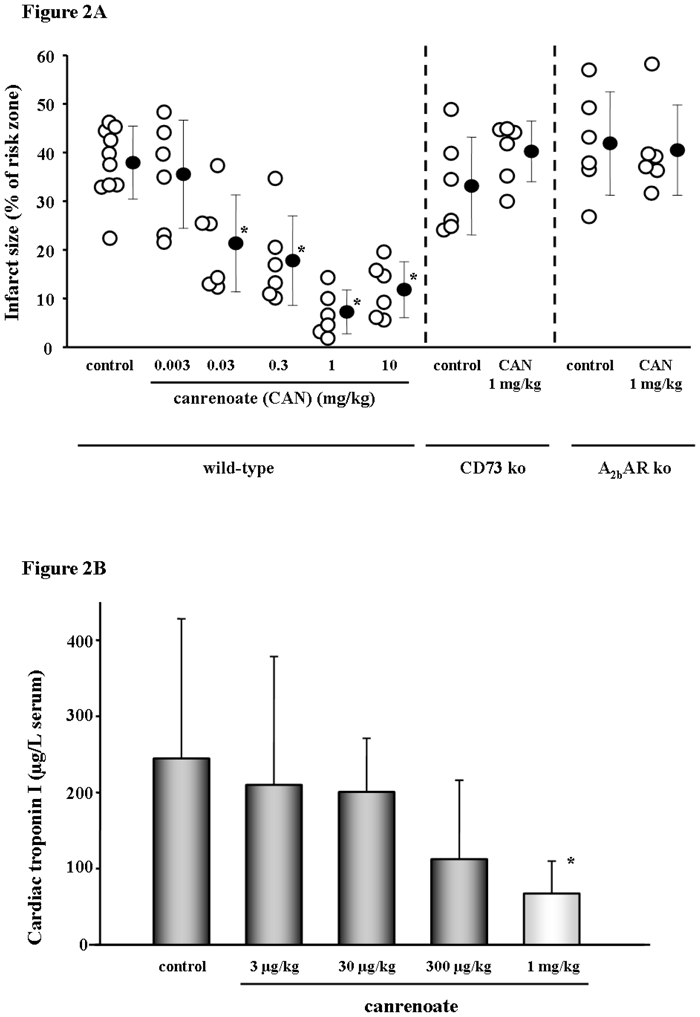Fig. 2.

Results of the in situ open chest mouse experiments. A Potassium canrenoate (CAN) as a bolus given 5 min prior to reperfusion was protective with a concentration as low as 30 μg/kg, whereas 1 mg/kg showed very profound protection. The right panels depict experiments with the use of CAN either given to ecto-5′-nucleotidase (CD73) knock-out (ko) or A2b adenosine receptor (AR) ko mice. In both knock-out animals, CAN’s protection was blunted, suggesting a role for extracellular adenosine and the A2bAR in the protective signaling. Open symbols represent individual experiments while closed symbols are the means ± SD. *p<0.001 vs. control. B Plasma levels of cardiac troponin I (cTnI) at the end of the in situ open-chest mouse experiments. While a bolus of potassium canrenoate 1 mg/kg 5 min before reperfusion reduced cTnI release at the end of the reperfusion period, there was no significant decrease with lower canrenoate concentrations. *p=0.022 vs. control.
